
Code: 16418304
Concise Handbook of Fluorocarbon Gases
by Sina Ebnesajjad
This book describes fluorocarbons gases' preparation process, properties, applications and their evolution over time. The impact of fluorocarbons on the ozone layer and global and the development to mitigate those effects have bee ... more
- Language:
 English
English - Binding: Hardback
- Number of pages: 448
Publisher: John Wiley & Sons Inc, 2021
- More about this

224.81 €
Availability:
50/50 We think title might be available. Upon your order we will do our best to get it within 6 weeks.
We think title might be available. Upon your order we will do our best to get it within 6 weeks.We search the world
You might also like
-

Money and Value
40.24 € -7 % -
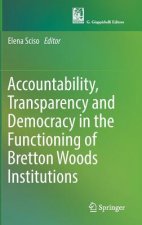
Accountability, Transparency and Democracy in the Functioning of Bretton Woods Institutions
177.51 € -

Green Algae Strategy: End Oil Imports And Engineer Sustainable Food And Fuel
25.35 € -1 % -

Business Opportunities in Macedonia
16.70 € -1 % -

Android Application Pentesting Handbook
38.73 € -2 % -

Around The Planet
13.78 € -

Klavierkonzerte 20,21 & 27
40.45 €
Give this book as a present today
- Order book and choose Gift Order.
- We will send you book gift voucher at once. You can give it out to anyone.
- Book will be send to donee, nothing more to care about.
Availability alert
Enter your e-mail address and once book will be available,
we will send you a message. It's that simple.
More about Concise Handbook of Fluorocarbon Gases
You get 565 loyalty points
 Book synopsis
Book synopsis
This book describes fluorocarbons gases' preparation process, properties, applications and their evolution over time. The impact of fluorocarbons on the ozone layer and global and the development to mitigate those effects have been specially emphasized.The first major industrial fluorinated compound was developed in the 1920's, to replace ammonia and sulfur dioxide refrigerants, at the General Motors Frigidaire Division by Thomas Midgley, Jr. and Albert Leon Henne. They developed a family of fluorocarbons trademarked Freon(r) for auto air conditioning units revolutionizing the auto industry. Other applications were developed over time including fire extinguishers, propellants, blowing agents, cleaners, anesthesia, artificial blood and others impacting every facet of life.In spite of being in broad global use for nearly a century, fluorocarbon gases have gone through great evolution during the last few decades. In the 1980s it was discovered chlorofluorocarbon (CFC) gases are harmful to the ozone layer, mainly because of their chlorine content. Chlorine was released in the upper atmosphere when chlorofluorocarbon molecules were broken down by the high energy cosmic radiation. CFCs were progressively banned following the Montreal Protocol of 1987.CFCs were replaced by fluorinated gases containing either less chlorine (hydrofluoro-chlorocarbons, or HCFCs), which are much less damaging (about 90% less) to the ozone layer or with fluorinated gases containing no chlorine, i.e. hydrofluorocarbons or HFCs. HFC have no impact on the ozone layer but impact global warming detrimentally. HFCs are usable without need for changes to the existing refrigeration or air conditioning installations. More recently hydrofluoroolefins (HFOs), which have little or no negative impact on global warming, have been developed to replace or reduce the use of HFCs. HFOs are used as single compounds or in blends. Research and development continues to develop and replace the HCFCs and HFCs completely with environmentally friendly products.Concise Handbook of Fluorocarbon Gases presents a reference and text for the commercial fluorocarbon gases which have great many application in a wide range of industries such as refrigeration and air conditioning, as well as consumer products.
 Book details
Book details
Book category Books in English Technology, engineering, agriculture Mechanical engineering & materials
224.81 €
- Full title: Concise Handbook of Fluorocarbon Gases
- Subtitle: Applications in Refrigeration and Other Industries
- Author: Sina Ebnesajjad
- Language:
 English
English - Binding: Hardback
- Number of pages: 448
- EAN: 9781119322979
- ISBN: 1119322979
- ID: 16418304
- Publisher: John Wiley & Sons Inc
- Weight: 666 g
- Dimensions: 257 × 178 × 30 mm
- Date of publishing: 11. April 2021
Trending among others
-

Shigley's Mechanical Engineering Design, 11th Edition, Si Units
75.87 € -

EDM Handbook
54.84 € -8 % -
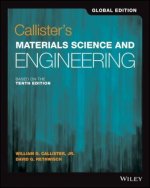
Callister's Materials Science and Engineering
66.11 € -1 % -

THERMODYNAMICS: AN ENGINEERING APPROACH, SI
75.77 € -

Learning by Heart
18.81 € -27 % -

Werkstofftechnik für Elektroberufe
36.22 € -

Heat And Mass Transfer, 6th Edition, Si Units
74.96 € -1 % -

Book Of Patterns For Hand-Weaving; Designs from The John Lan
31.99 € -2 % -

Wind Energy Handbook, 3rd Edition
133.74 € -7 % -

Handbook of Model Rocketry 7e
20.52 € -23 % -

Small Gas Engine Repair, Fourth Edition
25.35 € -20 % -

Schaum's Outline of Fluid Mechanics, Second Edition
18.81 € -27 % -

Analysis of Electric Machinery and Drive Systems, Third Edition
163.93 € -

Ceramic Bible
46.69 € -8 % -

Potter's Bible
15.09 € -18 % -

Flight Craft 1: Soviet Spyplanes of the Cold War
31.29 € -4 % -

Perry's Chemical Engineers' Handbook
235.58 € -5 % -

CIA Lockpicking Manual
10.56 € -25 % -

ISE Thermodynamics: An Engineering Approach
68.02 € -
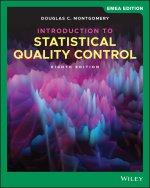
Introduction to Statistical Quality Control, 8th E dition EMEA Edition
71.24 € -

Selected Poems of Rumi
4.82 € -24 % -

Effective Project Management - Traditional, Agile, Extreme, Hybrid Eighth Edition
58.36 € -15 % -

Optically Stimulated Luminescence - Fundamentals and Applications
164.13 € -

ISE Fluid Mechanics
71.94 € -5 % -

Marks' Standard Handbook for Mechanical Engineers
195.02 € -

Basic Machines and How They Work
7.94 € -28 % -

ISE Vector Mechanics for Engineers: Statics and Dynamics
75.06 € -1 % -

CATIA Core Tools: Computer Aided Three-Dimensional Interactive Application
112.20 € -

Theory of Constraints Handbook
146.01 € -

Making Small Gas-Fired Boilers for Steam Models
19.41 € -25 % -

Solid State Physics 3e - An Introduction
57.96 € -

Collector's Guide to Royal Cenhagen Porcelain
50.51 € -

Principles of Metal Casting, Third Edition
135.35 € -

Using the Project Management Maturity Model - Strategic Planning for Project Management, Third Edition
94.89 € -2 % -

Chemistry Entrepreneurship
101.13 € -4 % -

Understanding Glazes
105.56 € -2 % -
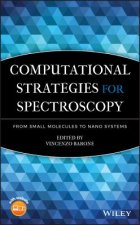
Computational Strategies for Spectroscopy - from Small Molecules to Nano Systems
157.18 € -2 % -

Design, Modeling and Reliability in Rotating Machinery
258.22 € -

Heterogeneous Catalysts - Advanced Design, Characterization and Applications
290.93 € -4 % -
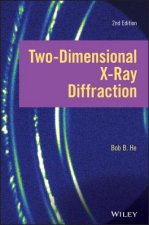
Two-dimensional X-ray Diffraction, Second Edition
170.97 € -4 % -

Handbook of Noise and Vibration Control
270 € -

ISE Fundamentals of Thermal-Fluid Sciences
72.05 € -5 % -

Electroplating
26.36 € -4 % -

Mechanical Engineers' Handbook
804.58 € -

Aircraft Control and Simulation - Dynamics, Controls Design, and Autonomous Systems 3e
162.52 € -4 % -

Combustion Engines - An Introduction to Their Design, Performance, and Selection
210.72 € -2 % -
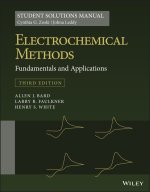
Electrochemical Methods: Fundamentals and Applicat ions 3e, Students Solutions Manual
71.04 € -

Engineering Handbook
298.38 € -

Project Management ToolBox
79.79 € -1 %
Collection points Bratislava a 2642 dalších
Copyright ©2008-24 najlacnejsie-knihy.sk All rights reservedPrivacyCookies


 15549 collection points
15549 collection points Delivery 2.99 €
Delivery 2.99 € 02/210 210 99 (8-15.30h)
02/210 210 99 (8-15.30h)